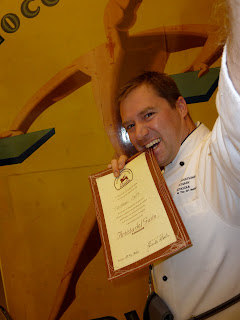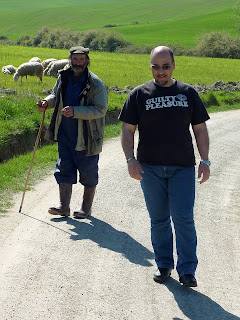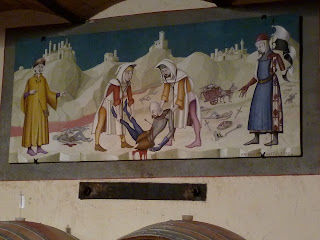





Our trip started at 5.30am, leaving Orvieto for Parma. Our first stop upon arrival was a producer of the famous cheese, Parmegiano-Reggiano.
Not unlike the bubbly Champagne beverage from France, cheese cannot be called Parmegiano-Reggiano unless it is produced in the area of Parma and subscribe to strict production practices.
First, specially-fed cows from the Parma region are milked and the milk is brought to the factory and left to sit overnight so that the cream is separated from the whey, the cream then taken elsewhere to produce butter. This partially skimmed milk is completely raw and unpasteurized! In the morning, the morning milk from the same cows is brought in and added to the skimmed milk and cooked in large, bell-shaped vats, where rennet and whey from past production is then added. Rennet is an enzyme taken from calf stomach and is an integral component in the production and aging of parmesan cheese.
Cooking the whole milk in the acidic whey is enough to cause curdling which settles into the bottom of the dome shaped vat. This mass of curdled protein is cut in half, strained in cloth and put in a plastic mold that bears the symbolic markings of the cheese. It takes 158.5 gallons of milk to make one wheel of Parmigiano-Reggiano, or one pint per ounce of cheese! Once the cheese drains after three days of bench aging, it is put into a brine solution for 20 days.
After the cheese is brined and stamped, it goes into an aging room where it will sit for a minimum of 18 months, and as long as 24 to 33 months. The cheese undergoes inspection for quality around 12 months, and is tapped by the hammer pictured to check for airgaps, and those wheels that pass inspection get the official seal and can be aged longer. The cheese that does not pass inspection is sold as Grano Padano.
We figured the aging room we were in contained over 5.5 million dollars worth of cheese- and this was a mall producer! The dogs that reside at the factory are some of the biggest fans of the cheese-a testament to their roundness...












 Our trip started at 5.30am, leaving Orvieto for Parma. Our first stop upon arrival was a producer of the famous cheese, Parmegiano-Reggiano.
Our trip started at 5.30am, leaving Orvieto for Parma. Our first stop upon arrival was a producer of the famous cheese, Parmegiano-Reggiano.  Next stop on our Parma tour was a traditional producer of Proscuitto di Parma. The buildings used for production are identifiable by their long windows, opened for part of the aging process of the ham. This modest building contained over $3 million worth of ham that we could see!
Next stop on our Parma tour was a traditional producer of Proscuitto di Parma. The buildings used for production are identifiable by their long windows, opened for part of the aging process of the ham. This modest building contained over $3 million worth of ham that we could see!
 After an early start and long bus ride through Tuscany, we arrived at the Prime Donne winery, a maker of the famous Brunello di Montalcino wine.
After an early start and long bus ride through Tuscany, we arrived at the Prime Donne winery, a maker of the famous Brunello di Montalcino wine.




